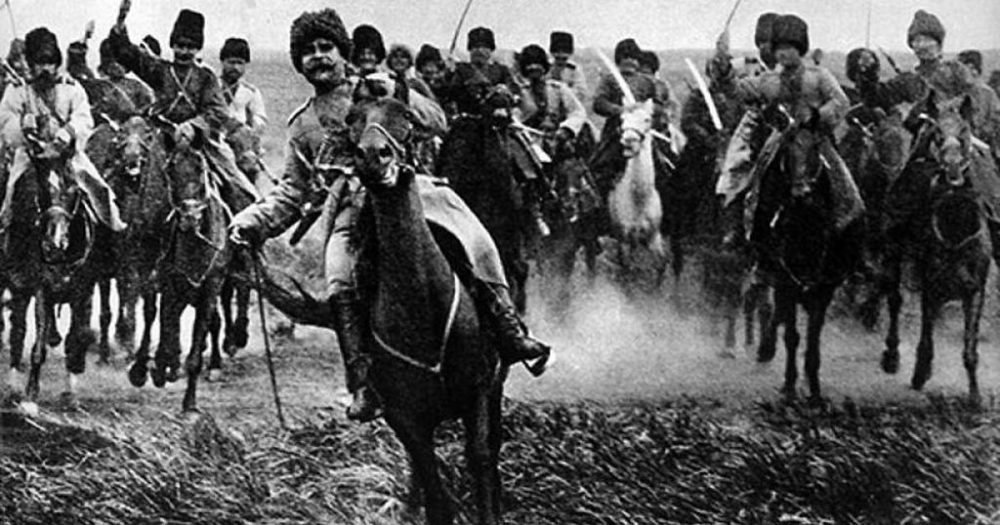The Brusilov Offensive was a military victory for the Russians on the Eastern Front. General Brusilov’s assault regained land lost to the Central Powers in the early phases of the war. A decisive victory, it led to the Hapsburg Empire being dependant upon German support and on the verge of collapse. The offensive lasted until September 1916.
The early stages of the First World War were disastrous for the Russian army. They were defeated at the Battle of Tannenberg in the opening days of the war and suffered further losses at the Battle of the Masurian Lakes. Tsar Nicholas II decided to assume the leadership of the armed forces. He appointed Aleksei A. Brusilov to plan an offensive for the Summer of 1916.

Background to the Brusilov Offensive
The Allies had agreed at Chantilly in December 1915 that there would be a major offensive against the Central Powers on each front in 1916. The Russians hoped that by agreeing to this, they would receive aid in the form of munitions from the Western Allies. Brusilov was placed in charge of planning the Russian campaign. It was to be launched to the south east of the Central Powers lines, the South west of Russia’s.
Brusilov’s Plan and Objectives
The objectives for Brusilov’s offensive were to ease pressure on Britain and France by draining the resources of the Central Powers. It also aimed to force the Hapsburg Empire out of the war through an overwhelming defeat.
The plan was to strike at the Austro-Hungarians flank. The Hapsburg army was stretched as many forces were fighting along the Italian Front. Brusilov was to strike toward Lviv and Kovel in modern day Romania. He requested that offensives were launched further north to assist his main drive: a request denied by the High Command.
Brusilov assigned 4 armies to his offensive. These comprised 40 infantry and 15 cavalry divisions. His reserve was brought to the front to dig trenches, which were designed to hinder enemy observations of his movements. As with the Western Front, the use of tunnels was adopted. Unlike his counterparts on the West, Brusilov did not tunnel underneath the enemy line but instead tunnelled to positions close to their front lines. The distance between the end of these tunnels and the Hapsburg front lines was between 70 and 100 metres.
4th June 1916: The Brusilov Offensive
On 4th June 1916 Brusilov ordered a brief but highly accurate bombardment of the Austro-Hungarian positions. The short bombardment caught the Austro-Hungarians by surprise. The standard method on the Eastern front mirrored that of the West, long and protracted bombardments in advance of an assault. Brusilov had achieved complete surprise in ordering such a short barrage. His forces, including some making use of the tunnels, broke through enemy lines along most of the 300 mile front.
Within days the Russians had advanced into Lutsk taking over 200,000 prisoners. The advance continued toward the Carpathian Mountains. The Austro-Hungarians were in full retreat across most of the front.
Advance slows
The speed of the advance led to Brusilov’s forces becoming stretched. He asked for additional offensives to be launched by forces led by General Evert to the north to support him and hinder German attempts to reinforce the Austro-Hungarians. This offensive was delayed. Then, instead of a full assault, men from this army were sent to reinforce Brusilov, against his wishes.
End of the Brusilov Offensive
The campaign drew to a close when the Russian forces reached the Carpathian mountains. The objective of regaining ground had been achieved. The objective of inflicting lasting damage to the Hapsburg Empire had been realised. The Germans had been forced to support the Austro-Hungarians, leading to a lack of reserves to fight both Verdun and the Somme on the Western Front. Militarily it was one of the most successful campaigns fought by any army in the First World War.
[products limit=”4″ columns=”4″ category=”first-world-war” cat_operator=”AND”]
Causes of the First World War – Timeline of Causes – Forgotten Causes – Assassination of Franz Ferdinand – The Schlieffen Plan – Historiography of the Causes of the First World War
Outbreak of War (Public reaction in Britain) – The British Expeditionary Force in 1914
Trench Warfare – Simulation: Would you make a good officer in the trenches? – British contribution to the Western Front
Battles of the First World War – First Battle of the Marne – The Gallipoli Campaign – Battle of Verdun – Battle of Jutland – Brusilov Offensive – Battle of the Somme – Battle of Passchendaele – The Spring Offensive – Battle of Amiens – Victory on the Western Front?
The Home Front – Revision exercise – Changing role of Women – Propaganda – Censorship – Conscientious Objectors – Rationing and Recruitment
Personalities – Douglas Haig and the Somme – Charles Gass – Billy Bishop – Ludendorff – The Bradford Pals – Black History and the First World War
Technology and New Weapons – British Tanks – Machine Guns
Medicine in the First World War
Other wars:
The Norman Conquest – The Wars of the Roses – The British and English Civil Wars – The Second World War – Vietnam War – Cold War
Famous Battles:
Battle of Hastings – Battle of Towton – Battle of Bosworth – D Day
Related Content:
The British Empire – The Treaty of Versailles – Impact of the War on Germany – Primary History – History Teachers Resources

